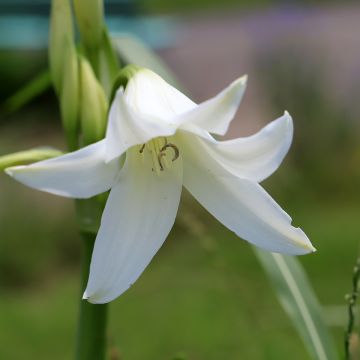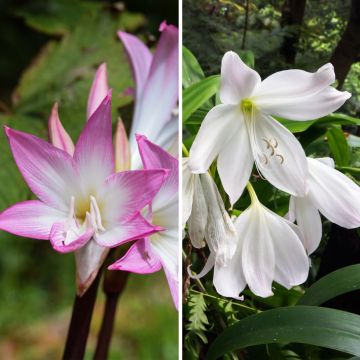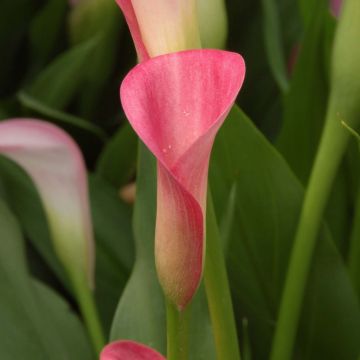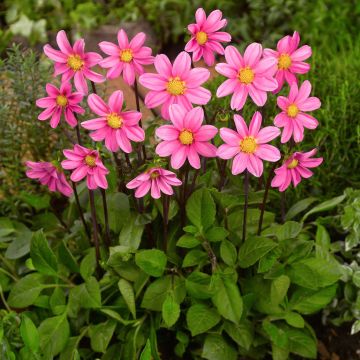

Crinum moorei
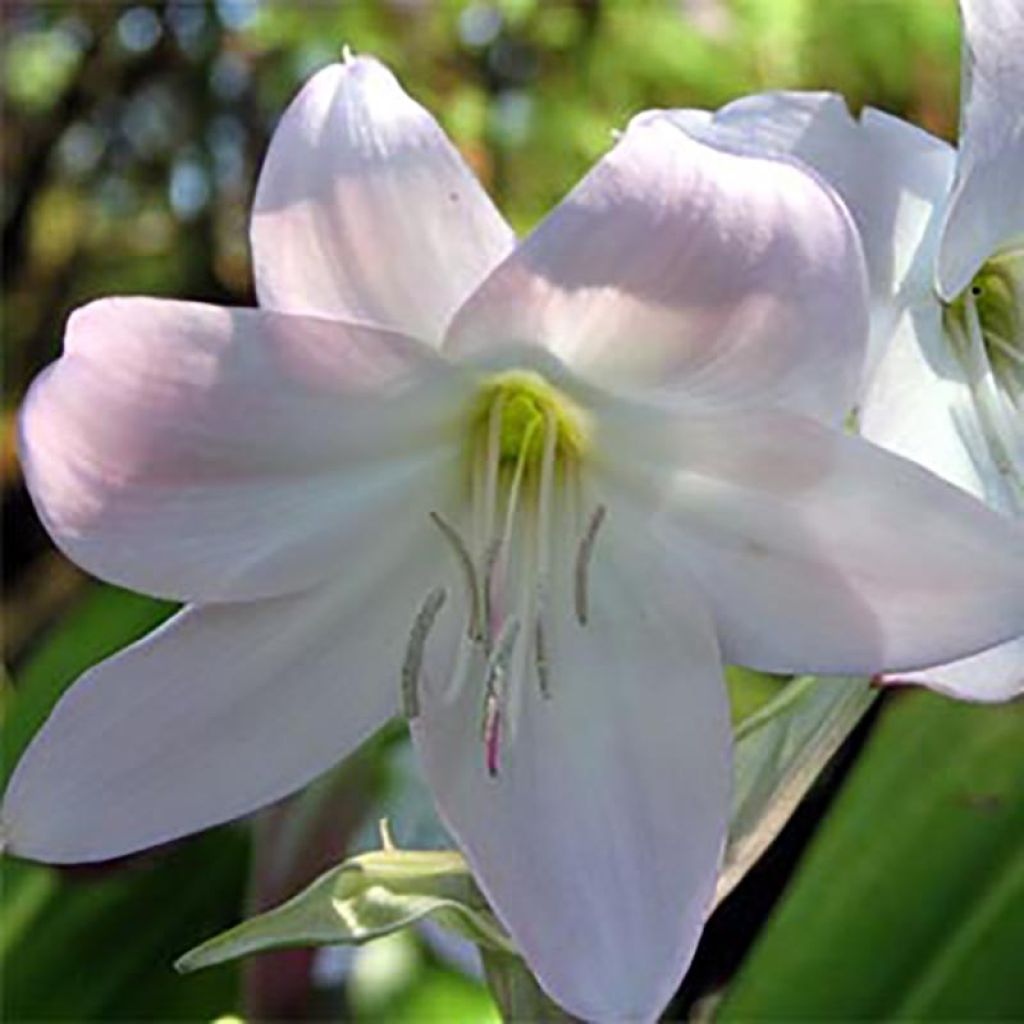

Crinum moorei


Crinum moorei
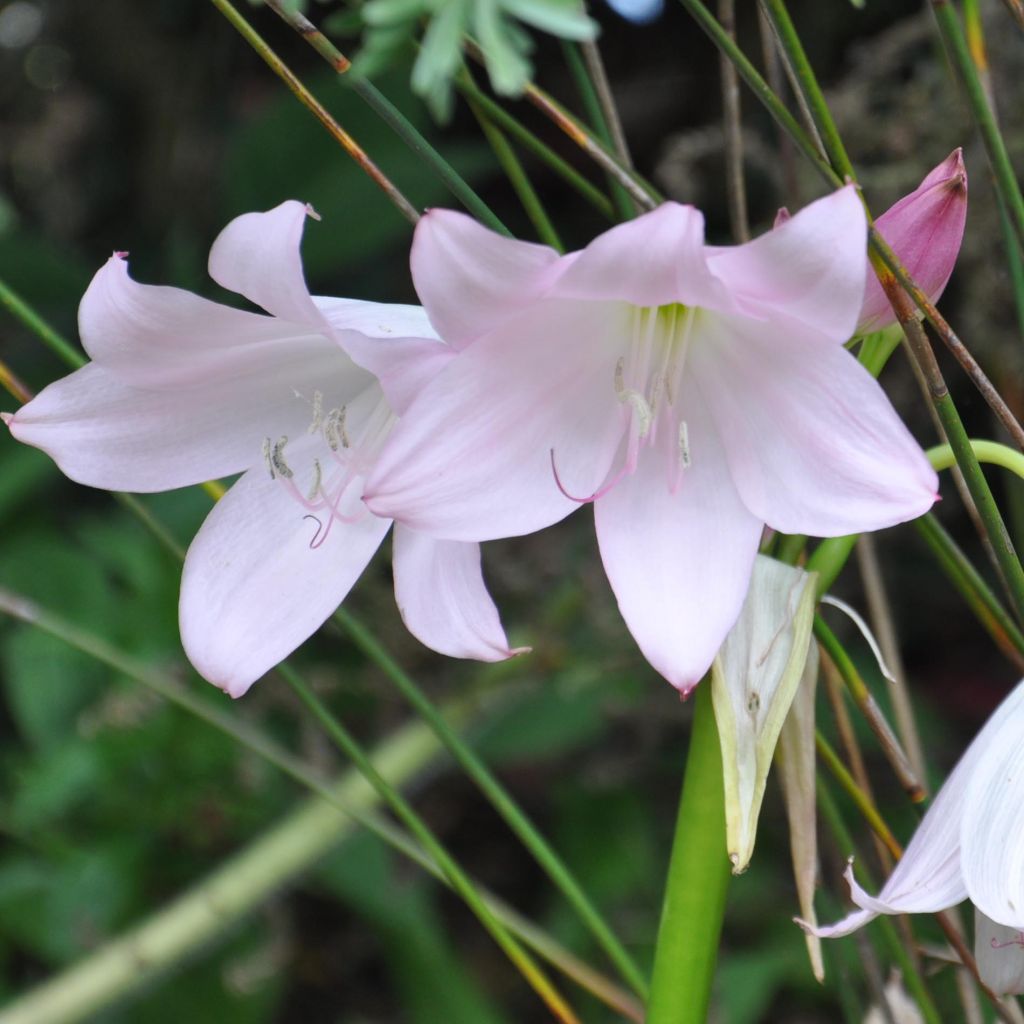

Crinum moorei
Crinum moorei - Natal lily
Crinum moorei
Moore's crinum, Natal lily, lily of the Orinoco
Hello, 6 crinums ordered have been received and planted at the beginning of April. It is now early May and so far none of them have shown any growth. We'll see...
Joëlle, 05/05/2020
Why not try an alternative variety in stock?
View all →This plant carries a 6 months recovery warranty
More information
We guarantee the quality of our plants for a full growing cycle, and will replace at our expense any plant that fails to recover under normal climatic and planting conditions.
From €5.90 for pickup delivery and €6.90 for home delivery
Express home delivery from €8.90.

Does this plant fit my garden?
Set up your Plantfit profile →
Description
Crinum moorei is a fairly hardy perennial bulbous plant that produces large clusters of fragrant flowers resembling gracefully inclined white lilies in summer. The foliage is reminiscent of corn leaves and usually disappears during flowering. Its exotic and slender appearance is perfect for enhancing a garden that is considered too traditional. It is easy to grow in shade and prefers loose and well-drained soils.
Crinum moorei is a bulbous plant belonging to the amaryllidaceae family. This species is naturally native to the humid forests of South Africa. The plant grows from a very large bulb measuring 8-10 cm (3-4in) in diameter, with a very long "neck" of 10-20 cm (4-8in) that usually emerges above the ground. In early spring, long light green leaves exceeding 50 cm (20in) in length appear. The flower stalks appear in July or August and reach 80 cm (32in) high. At their tips, 10 large white-pink lily-like flowers open successively, arranged in crowns. These are 10 cm (4in) long star-shaped trumpets. The flowering is pleasantly fragrant. The very wide leaves usually begin to wither when the flowers bloom.
Crinums, or crinole lilies, live for many years (20 or more) without needing to be replanted, forming large clumps over time. With good fertilisation and regular watering in summer, the vegetation becomes very impressive, with a long summer flowering. If the climate in your region is not too harsh, you can plant Crinum moorei in the ground in a shaded area, in a light understory with moist soil. It pairs well with Amaryllis belladonna, toad lilies (Tricyrtis formosana), wild arums, and ferns. If the winter in your region is too severe for this beautiful temperate tropical plant, consider growing it in a pot that can be stored indoors during winter. It will look fabulous when placed in a large and deep pot in the shade on a terrace or near an entrance.
Report an error about the product description
Crinum moorei - Natal lily in pictures




Plant habit
Flowering
Foliage
Botanical data
Crinum
moorei
Amaryllidaceae
Moore's crinum, Natal lily, lily of the Orinoco
South Africa
Other Amaryllis and Crinums
Planting and care
In its native habitat, Crinum moorei grows in shaded areas, along streams. This plant is hardy to -5°C (23°F) and can tolerate temperatures down to -10°C (14°F) in well-drained soil, dry and sheltered during winter. Its foliage can easily be damaged by even mild frosts, but it will reappear in March. Plant the bulb in spring, in loose, rich, moist, well-drained soil. A mix of regular soil, leaf compost and sand will be perfect. Place your crinole in a shaded area, as the sun can scorch its foliage. Water regularly in the summer if grown in a pot. It is a good idea to apply a thick mulch to protect the crown during winter, or consider growing it in a container that allows the plant to overwinter in an unheated space, protected from severe frosts.
Planting period
Intended location
Care
-
, onOrder confirmed
Reply from on Promesse de fleurs
Bulbs to grow in pots
Haven't found what you were looking for?
Hardiness is the lowest winter temperature a plant can endure without suffering serious damage or even dying. However, hardiness is affected by location (a sheltered area, such as a patio), protection (winter cover) and soil type (hardiness is improved by well-drained soil).

Photo Sharing Terms & Conditions
In order to encourage gardeners to interact and share their experiences, Promesse de fleurs offers various media enabling content to be uploaded onto its Site - in particular via the ‘Photo sharing’ module.
The User agrees to refrain from:
- Posting any content that is illegal, prejudicial, insulting, racist, inciteful to hatred, revisionist, contrary to public decency, that infringes on privacy or on the privacy rights of third parties, in particular the publicity rights of persons and goods, intellectual property rights, or the right to privacy.
- Submitting content on behalf of a third party;
- Impersonate the identity of a third party and/or publish any personal information about a third party;
In general, the User undertakes to refrain from any unethical behaviour.
All Content (in particular text, comments, files, images, photos, videos, creative works, etc.), which may be subject to property or intellectual property rights, image or other private rights, shall remain the property of the User, subject to the limited rights granted by the terms of the licence granted by Promesse de fleurs as stated below. Users are at liberty to publish or not to publish such Content on the Site, notably via the ‘Photo Sharing’ facility, and accept that this Content shall be made public and freely accessible, notably on the Internet.
Users further acknowledge, undertake to have ,and guarantee that they hold all necessary rights and permissions to publish such material on the Site, in particular with regard to the legislation in force pertaining to any privacy, property, intellectual property, image, or contractual rights, or rights of any other nature. By publishing such Content on the Site, Users acknowledge accepting full liability as publishers of the Content within the meaning of the law, and grant Promesse de fleurs, free of charge, an inclusive, worldwide licence for the said Content for the entire duration of its publication, including all reproduction, representation, up/downloading, displaying, performing, transmission, and storage rights.
Users also grant permission for their name to be linked to the Content and accept that this link may not always be made available.
By engaging in posting material, Users consent to their Content becoming automatically accessible on the Internet, in particular on other sites and/or blogs and/or web pages of the Promesse de fleurs site, including in particular social pages and the Promesse de fleurs catalogue.
Users may secure the removal of entrusted content free of charge by issuing a simple request via our contact form.
The flowering period indicated on our website applies to countries and regions located in USDA zone 8 (France, the United Kingdom, Ireland, the Netherlands, etc.)
It will vary according to where you live:
- In zones 9 to 10 (Italy, Spain, Greece, etc.), flowering will occur about 2 to 4 weeks earlier.
- In zones 6 to 7 (Germany, Poland, Slovenia, and lower mountainous regions), flowering will be delayed by 2 to 3 weeks.
- In zone 5 (Central Europe, Scandinavia), blooming will be delayed by 3 to 5 weeks.
In temperate climates, pruning of spring-flowering shrubs (forsythia, spireas, etc.) should be done just after flowering.
Pruning of summer-flowering shrubs (Indian Lilac, Perovskia, etc.) can be done in winter or spring.
In cold regions as well as with frost-sensitive plants, avoid pruning too early when severe frosts may still occur.
The planting period indicated on our website applies to countries and regions located in USDA zone 8 (France, United Kingdom, Ireland, Netherlands).
It will vary according to where you live:
- In Mediterranean zones (Marseille, Madrid, Milan, etc.), autumn and winter are the best planting periods.
- In continental zones (Strasbourg, Munich, Vienna, etc.), delay planting by 2 to 3 weeks in spring and bring it forward by 2 to 4 weeks in autumn.
- In mountainous regions (the Alps, Pyrenees, Carpathians, etc.), it is best to plant in late spring (May-June) or late summer (August-September).
The harvesting period indicated on our website applies to countries and regions in USDA zone 8 (France, England, Ireland, the Netherlands).
In colder areas (Scandinavia, Poland, Austria...) fruit and vegetable harvests are likely to be delayed by 3-4 weeks.
In warmer areas (Italy, Spain, Greece, etc.), harvesting will probably take place earlier, depending on weather conditions.
The sowing periods indicated on our website apply to countries and regions within USDA Zone 8 (France, UK, Ireland, Netherlands).
In colder areas (Scandinavia, Poland, Austria...), delay any outdoor sowing by 3-4 weeks, or sow under glass.
In warmer climes (Italy, Spain, Greece, etc.), bring outdoor sowing forward by a few weeks.

































